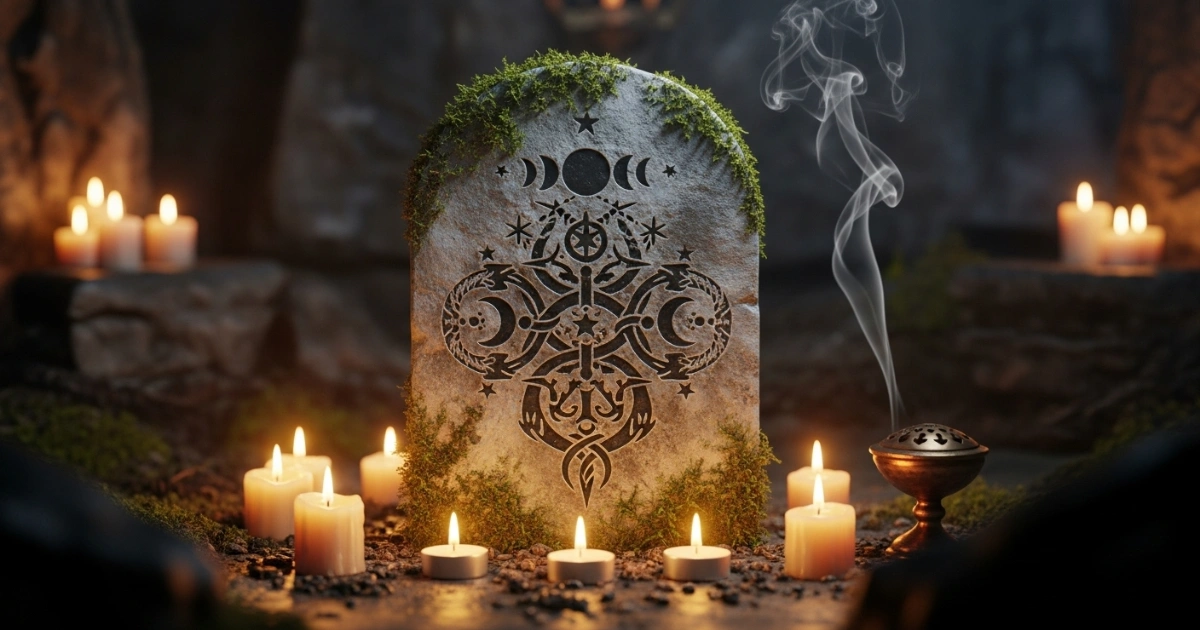Boost Your Brand with Ritualized Identity in 2025

Contents
- 1 What is Ritualized Brand Identity and Why It Matters?
- 2 How Does Ritualized Brand Identity Enhance Customer Loyalty?
- 3 Why Ritualized Brand Identity Matters for Modern Brands?
- 4 Key Elements of a Successful Ritualized Brand Identity
- 5 How to Create a Ritualized Brand Identity
- 6 Real-World Examples of Ritualized Brand Identity
- 7 Challenges of Implementing Ritualized Brand Identity
- 8 The Future of Ritualized Brand Identity in 2025
- 9 Tips for Small Businesses to Implement Ritualized Brand Identity
- 10 Measuring the Success of Ritualized Brand Identity
In today’s fast-paced digital world, businesses strive to create a ritualized brand identity that resonates deeply with their audience. Consumers crave more than just products or services; they seek experiences that foster emotional connections and a sense of belonging. By weaving meaningful rituals into their branding strategies, companies can transform casual buyers into loyal advocates. This article explores the concept of ritualized brand identity, its significance in modern marketing, and actionable strategies to implement it effectively. Through intentional rituals, brands can cultivate trust, loyalty, and engagement, ensuring they stand out in a crowded marketplace.
What is Ritualized Brand Identity and Why It Matters?
Ritualized brand identity refers to the strategic integration of consistent, meaningful rituals into a brand’s core identity to foster emotional connections with consumers. Unlike traditional branding, which focuses on logos, colors, and messaging, ritualized branding emphasizes repeatable actions or experiences that align with a brand’s values and resonate with its audience. These rituals create a sense of community, reinforce brand loyalty, and make interactions with the brand memorable.
For example, think of Starbucks’ morning coffee ritual, where customers personalize their orders and feel a sense of comfort in the familiarity of the experience. This ritual transcends the act of buying coffee—it becomes a daily moment of self-expression and connection. By embedding such rituals, brands can differentiate themselves and build lasting relationships.
How Does Ritualized Brand Identity Enhance Customer Loyalty?
The modern consumer is bombarded with choices, making it harder for brands to stand out. Ritualized brand identity offers a solution by tapping into human psychology. Rituals, by nature, provide structure, comfort, and meaning, fulfilling innate desires for connection and belonging. Here’s why ritualized brand identity is crucial:
- Fosters Emotional Connections: Rituals evoke emotions, making customers feel valued and understood.
- Builds Brand Loyalty: Consistent rituals encourage repeat engagement, turning customers into advocates.
- Enhances Memorability: Unique rituals make brands unforgettable, increasing word-of-mouth marketing.
- Creates Community: Shared rituals unite customers, fostering a sense of belonging.
- Differentiates in Competitive Markets: Rituals set brands apart in saturated industries.
By prioritizing ritualized brand identity, businesses can create experiences that resonate on a deeper level, driving long-term success.
Why Ritualized Brand Identity Matters for Modern Brands?

Rituals are deeply rooted in human behavior. Anthropologically, they serve as mechanisms to strengthen social bonds and create shared experiences. In branding, rituals leverage this psychology to build trust and loyalty. According to a 2019 study by the Journal of Consumer Psychology, rituals enhance consumption experiences by making them more meaningful and enjoyable.
For instance, when customers participate in a brand’s ritual—such as Nike’s encouragement of daily runs tracked via their app—they feel part of a larger movement. This sense of purpose strengthens their connection to the brand. Moreover, rituals trigger dopamine release, associating positive emotions with the brand and encouraging repeat behavior.
Key Elements of a Successful Ritualized Brand Identity
To create an effective ritualized brand identity, brands must incorporate several key elements. These ensure the rituals are authentic, engaging, and aligned with the brand’s mission.

1. What Makes Consistency Key in Brand Rituals?
Rituals thrive on repetition. Whether it’s a weekly newsletter with a signature sign-off or an annual customer appreciation event, consistency reinforces the ritual’s significance. For example, Apple’s product launch events have become a ritualized spectacle, eagerly anticipated by fans worldwide.
2. How Authenticity Strengthens Your Brand Presence?
Rituals must align with the brand’s values and mission. Inauthentic rituals risk alienating customers. Patagonia’s commitment to environmental activism, for instance, is reflected in its “Worn Wear” repair program, a ritual that encourages sustainability and resonates with eco-conscious consumers.
3. Emotional Resonance
Effective rituals evoke emotions like joy, nostalgia, or pride. Coca-Cola’s holiday campaigns, featuring the iconic Santa Claus and twinkling lights, tap into feelings of warmth and togetherness, making the brand synonymous with festive cheer.
4. Why Simplicity Drives Ritual Engagement?
Rituals should be easy to adopt. Complex rituals may deter participation. For example, Duolingo’s daily language-learning streaks are simple yet addictive, encouraging users to engage consistently.
5. How Rituals Build Emotional Connections with Customers?
Rituals that involve the community foster a sense of belonging. Lululemon’s free yoga classes create a shared experience, uniting customers around the brand’s wellness ethos.
By incorporating these elements, brands can craft rituals that feel natural and meaningful, encouraging long-term engagement.
How to Create a Ritualized Brand Identity
Building a ritualized brand identity requires careful planning and execution. Here’s a step-by-step guide to help brands integrate rituals effectively:

Step 1: Understand Your Audience
Start by researching your target audience’s values, preferences, and behaviors. Use surveys, social media analytics, and customer feedback to identify what resonates with them. For instance, a fitness brand might discover that its audience values community and accountability, paving the way for group workout rituals.
Step 2: Align Values with Brand Rituals
Ensure rituals reflect your brand’s core mission. If your brand emphasizes creativity, consider rituals that encourage self-expression, such as user-generated content campaigns. For example, Adobe’s #CreativityForAll campaign invites users to share their artwork, reinforcing the brand’s commitment to creative empowerment.
Step 3: Design Simple, Repeatable Actions
Create rituals that are easy to integrate into customers’ lives. For example, a skincare brand might encourage a nightly routine using its products, complete with a branded journal to track progress. This simple act reinforces the brand’s presence in daily life.
Step 4: Leverage Storytelling for Engagement
Use storytelling to make rituals meaningful. Share the “why” behind the ritual through marketing campaigns, social media, and packaging. For instance, TOMS’ “One for One” giving model is a ritualized act of purchase and donation, amplified by compelling stories of impact.
Step 5: Encourage Community Participation
Involve customers in rituals to foster a sense of community. Host events, create hashtags, or launch challenges that invite participation. For example, Peloton’s leaderboard challenges encourage users to compete and connect, strengthening the brand’s community.
Step 6: Measure and Refine
Track the effectiveness of rituals through metrics like customer retention, engagement rates, and social media mentions. Use this data to refine rituals and ensure they remain relevant. For instance, if a ritual isn’t resonating, consider tweaking its format or messaging.
Real-World Examples of Ritualized Brand Identity
Several brands have successfully implemented ritualized brand identity to build loyalty and engagement. Here are a few standout examples:

How Starbucks Masters the Morning Coffee Ritual?
Starbucks has transformed the act of buying coffee into a personalized ritual. From customizing orders to the familiar green logo on cups, the brand creates a comforting, repeatable experience. The Starbucks Rewards program further reinforces this ritual by incentivizing frequent visits.
What Makes Nike’s Fitness Ritual Inspiring?
Nike’s “Just Do It” ethos is embodied in its app, which encourages daily fitness rituals like running or yoga. By tracking progress and offering challenges, Nike fosters a sense of achievement and community, making the brand a daily part of users’ lives.
How Apple’s Product Launch Ritual Builds Hype?
Apple’s product launches are a global event, with fans eagerly awaiting announcements. This ritualized experience builds anticipation and reinforces Apple’s image as an innovator. The consistency of these events creates a sense of excitement and loyalty.
4. Lululemon: The Wellness Ritual
Lululemon’s free yoga classes and community runs create shared rituals that align with its wellness-focused identity. These events foster a sense of belonging, encouraging customers to associate the brand with health and community.
Challenges of Implementing Ritualized Brand Identity
While powerful, creating a ritualized brand identity comes with challenges. Here are some common obstacles and how to overcome them:
- Inauthenticity Risks: Rituals that feel forced or misaligned can backfire. To avoid this, ensure rituals reflect your brand’s authentic values and resonate with your audience.
- Overcomplication: Complex rituals may discourage participation. Keep rituals simple and accessible to maximize adoption.
- Cultural Sensitivity: Rituals must respect cultural differences to avoid alienating diverse audiences. Conduct thorough research to ensure inclusivity.
- Maintaining Engagement: Rituals can lose relevance over time. Regularly refresh rituals based on customer feedback and market trends.
- Resource Constraints: Small businesses may lack the resources for large-scale rituals. Focus on low-cost, high-impact rituals, like social media challenges or personalized customer interactions.
By anticipating these challenges, brands can create rituals that are authentic, inclusive, and sustainable.
The Future of Ritualized Brand Identity in 2025

As consumer expectations evolve, ritualized brand identity will become even more critical. In 2025, brands will leverage technology to create personalized, immersive rituals. For example, augmented reality (AR) could enable virtual rituals, such as interactive product unboxings or guided experiences. Additionally, the rise of social media platforms like X will amplify community-driven rituals, with brands using hashtags and challenges to engage audiences.
Sustainability will also play a larger role. Consumers increasingly value brands that prioritize ethical practices, and rituals that emphasize sustainability—such as refill programs or recycling initiatives—will gain traction. By staying attuned to these trends, brands can future-proof their ritualized brand identity.
Tips for Small Businesses to Implement Ritualized Brand Identity
Small businesses can create impactful rituals without breaking the bank. Here are some practical tips:
- Start Small: Launch simple rituals, like a weekly social media post encouraging customers to share their experiences with your product.
- Leverage Digital Platforms: Use platforms like X or Instagram to create hashtag-driven rituals that encourage user participation.
- Personalize Experiences: Offer personalized thank-you notes or exclusive discounts to make customers feel special.
- Host Local Events: Organize small community events, like workshops or pop-up shops, to build local loyalty.
- Collaborate with Influencers: Partner with micro-influencers to amplify your rituals and reach new audiences.
By focusing on authenticity and simplicity, small businesses can create rituals that rival those of larger brands.
Measuring the Success of Ritualized Brand Identity
To ensure rituals deliver results, brands must track key performance indicators (KPIs). Here are some metrics to monitor:

- Customer Retention Rate: Measures how many customers return after participating in rituals.
- Engagement Metrics: Tracks likes, shares, and comments on ritual-related content.
- Net Promoter Score (NPS): Gauges customer loyalty and likelihood to recommend the brand.
- Sales Growth: Assesses whether rituals drive increased purchases.
- Social Media Mentions: Monitors how often customers share ritual experiences online.
By analyzing these metrics, brands can refine their rituals to maximize impact.
Ready to Ritualize Your Brand with AI-Powered Content?
In a world where ritualized brand identity drives deeper engagement, Leyline Pro’s Film Agent can help you create compelling videos and animations that turn everyday interactions into memorable rituals—effortlessly aligning with your brand values. Imagine generating custom launch event visuals or community storytelling content that boosts loyalty without the hassle. Start transforming your marketing today.
Click here to Launch Your Brand Ritual with Film Agent Now
Conclusion
A ritualized brand identity is more than a marketing tactic—it’s a powerful way to build lasting connections with consumers. By integrating meaningful, authentic rituals into their branding, businesses can foster loyalty, enhance engagement, and stand out in competitive markets. From understanding your audience to leveraging storytelling and community involvement, creating a ritualized brand identity requires strategy and creativity. As we move into 2025, brands that embrace this approach will be well-positioned to thrive in an experience-driven economy. Start small, stay authentic, and watch your brand transform into a beloved part of your customers’ lives.






